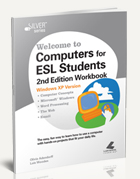Are you beginning to feel like your attention to course management, such as creating assessments, analyzing student performance, and updating grade books, is taking away from the 
thing you love best – teaching? Here at Labyrinth Learning we love teaching too, which is why we have spent the last two decades creating one-of-a-kind online tools for teachers. Shop our eLab products and experience the most innovative and engaging course management system (CMS) on the market.
Our textbooks are geared towards students at every level of computer and software literacy, and dozens of them are enabled to work with our eLab skills evaluation tool.
- Hands-on assessments: Whether you choose to use our pre-built assessments or prefer to customize your own, you and your students will receive immediate feedback on their computer literacy, which materials need reinforcing, and how much students have improved their skills through the duration of the course. Individual and group progress can be analyzed in seconds.
- Grade Books. Keeping track of grades has never been easier because our CMS does it for you. eLab CMS is a tool that complements our textbooks and provides automated grading and online training tools as a supplemental component for courses. (It is not an online course.) Students use their individual license keys and work online. All completed work and test scores will be deposited right into your grade book.
- Communication. Students who need specialized help and training have a direct communication line with you, which keeps your teaching time relevant and on point.
For more information on how online tools for teachers will enhance your classroom experience, visit Labyrinth Learning and register to view our online catalog.












